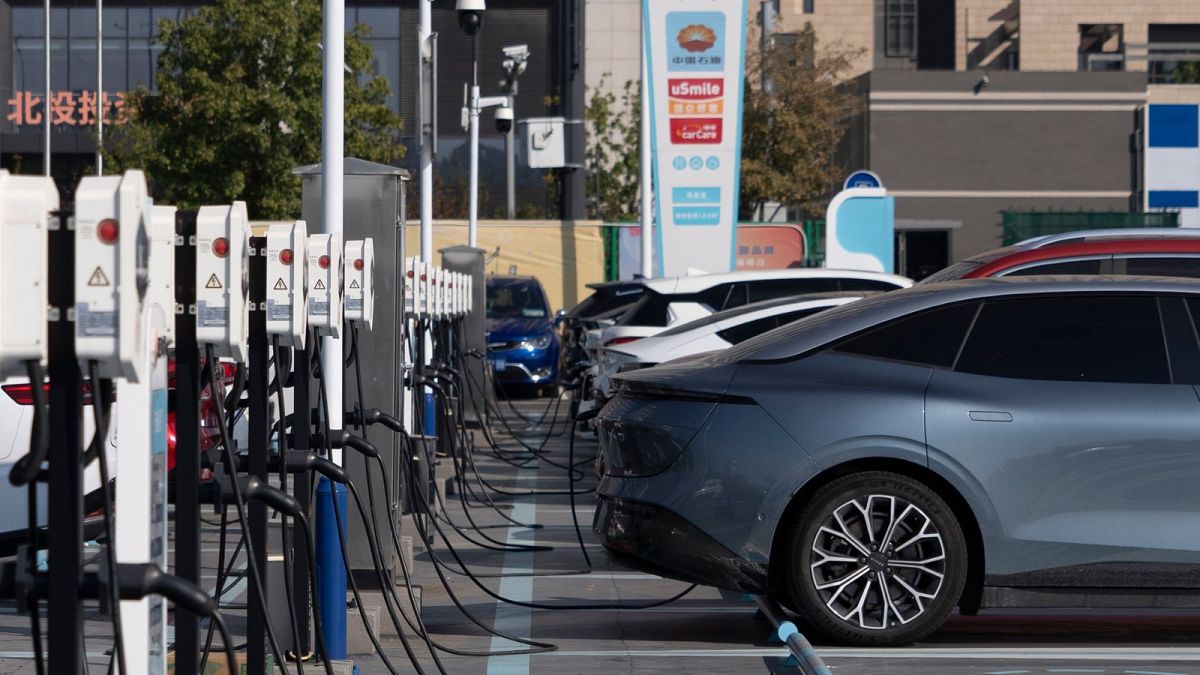China’s EV boom offers climate hope, but market dominance risks new environmental challenges.
Ten years ago, you would be forgiven for assuming the snowballing climate crisis was low-down on China’s priority list.
Accounting for approximately 11.9 billion metric tonnes of emissions in 2023 alone, the country has been the largest global emitter of CO2 since 2006 – with emissions double that of the next greatest carbon offender, the United States.
But today, China is also the biggest global exporter of electric vehicles (EVs). Following an astonishing 13,300 per cent increase in production between 2017 and 2023, the country has skyrocketed to dominance in the sector.
According to the IEA’s latest report, China sold over 1.2 million EVs abroad in 2023 alone, with Europe a major destination for the vehicles.
Even as the country’s carbon emissions continue to rise, China’s rapid expansion into alternative energy warrants a consideration not only of what this might mean for Europe’s own EV market, but the climate more broadly.
How did China come to dominate the EV market?
China’s dominance in the EV market has been a long time coming. EV technology became an investment priority as early as 2001, and was accelerated by generous government subsidies offered to EV companies producing buses and taxis as well as cars.
The government had ample incentive to prioritise EV expansion. Particularly for badly-affected urban areas, investment in the EV market promised a solution to China’s severe pollution issues; emissions from the transport sector previously accounted for 10 per cent of the country’s total.
Beyond this, a foothold in the EV sector enabled China to reduce its reliance on imported oil, strengthening the country’s energy security.
With unparalleled manufacturing and battery expertise, China was primed to dominate the EV market. Controlling nearly 70 per cent of the rare earth elements needed for EV batteries gives the country substantial cost and access advantage.
But China has also adapted well to local markets, adjusting pricing models, partnering with local businesses, and providing in-car entertainment systems that cater to local languages and cultural preferences.
Despite Europe’s resource constraints, China’s flexibility offers important lessons for Europe as it continues to develop its own EV market.
How has Europe responded to China’s EV challenge?
While China’s big investment efforts into the EV sector might broadly be considered positive for the climate, Europe has reacted with a mix of concerned and strategic measures.
In October 2024, the EU imposed new tariffs of up to 35 per cent on Chinese EVs, on top of an existing 10 per cent duty. Doing so has revealed significant rifts within the EU.
France, for example, argues in favour of protecting its domestic car industry through these taxes, while Germany (which holds significant market shares in China), have expressed concerns about potential retaliation. Negotiations between the two powers remain terse, and ongoing.
According to Lucca Ewbank, transport programme manager at independent climate think tank InfluenceMap, “domestic EV production is unlikely to accelerate without ambitious automotive climate policies in the EU”.
However, the “negative pushback” from non-EV automakers, led by the European Automobile Manufacturers Association, not only risks the credibility of the EU’s decarbonisation pathway, but could also give Chinese automakers “a major advantage in the global EV race,” he adds.
So what does China’s EV dominance mean for the climate?
China’s dominance into the EV market might well be hailed as good news for climate action. The country’s manufacturing prowess has been a driving force behind the rapid adoption of affordable EVs globally, accounting for 50 per cent of global EV production.
Its expertise in battery production and innovation leaves China well placed to accelerate improvements in EV technology, making them more viable and attractive alternatives to fossil fuel-run cars globally.
But the environmental implications of China’s dominance in the EV sphere remain complicated. If not managed sustainably, China’s control over critical battery materials could lead to further environmental damage in all manner of forms, from intensive mining practices, to further water and air pollution.
And as EVs take over, the surge in electricity demand may lead to increased coal consumption in regions heavily dependent on coal-fired power plants, if the energy transition fails to keep pace.
Production of the vehicles themselves is also not without issue: battery manufacturing in particular generates higher emissions in comparison to conventional vehicles, creating a “carbon debt” that takes a significant time to offset.
As Europe and the rest of the world grapples with its decarbonisation goals, China’s electric vehicle dominance offers both a hopeful and cautionary tale.
The rapid roll-out of affordable EVs is a powerful tool against transport emissions. But a careful management of this transition is essential: innovation must be matched with sustainable practices – ensuring the road to greener transportation doesn’t create its own environmental potholes.

